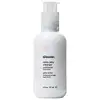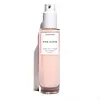What's inside
What's inside
 Key Ingredients
Key Ingredients

 Benefits
Benefits

 Concerns
Concerns

No concerns
 Ingredients Side-by-side
Ingredients Side-by-side

Water
Skin ConditioningRosa Damascena Flower Water
MaskingGlycerin
HumectantPropanediol
SolventIsohexadecane
EmollientAcrylamide/Sodium Acryloyldimethyltaurate Copolymer
Emulsion StabilisingSodium Hyaluronate
HumectantPanthenol
Skin ConditioningAllantoin
Skin ConditioningSymphytum Officinale Root Extract
Skin ConditioningXylitylglucoside
HumectantBetaine
HumectantAnhydroxylitol
HumectantXylitol
HumectantAmmonium Polyacryloyldimethyl Taurate
Emulsion StabilisingEthylhexylglycerin
Skin ConditioningPolysorbate 80
EmulsifyingSorbitan Oleate
EmulsifyingBenzoic Acid
MaskingCitric Acid
BufferingSodium Hydroxide
BufferingPotassium Sorbate
PreservativeSodium Benzoate
MaskingGeraniol
PerfumingCitronellol
PerfumingWater, Rosa Damascena Flower Water, Glycerin, Propanediol, Isohexadecane, Acrylamide/Sodium Acryloyldimethyltaurate Copolymer, Sodium Hyaluronate, Panthenol, Allantoin, Symphytum Officinale Root Extract, Xylitylglucoside, Betaine, Anhydroxylitol, Xylitol, Ammonium Polyacryloyldimethyl Taurate, Ethylhexylglycerin, Polysorbate 80, Sorbitan Oleate, Benzoic Acid, Citric Acid, Sodium Hydroxide, Potassium Sorbate, Sodium Benzoate, Geraniol, Citronellol
Water
Skin ConditioningRosa Damascena Flower Water
MaskingDecyl Glucoside
CleansingGlycerin
HumectantSodium Lauroyl Lactylate
EmulsifyingSqualane
EmollientGlyceryl Caprylate
EmollientXanthan Gum
EmulsifyingGlyceryl Stearate
EmollientTremella Fuciformis Sporocarp Extract
AntioxidantCaprylhydroxamic Acid
Camellia Sinensis Leaf Extract
AntimicrobialAloe Barbadensis Leaf Juice
Skin ConditioningCitric Acid
BufferingEclipta Prostrata Extract
Skin ConditioningSodium Hyaluronate
HumectantMelia Azadirachta Leaf Extract
Skin ConditioningMoringa Oleifera Seed Oil
EmollientCocos Nucifera Fruit Juice
EmollientTapioca Starch
Water, Rosa Damascena Flower Water, Decyl Glucoside, Glycerin, Sodium Lauroyl Lactylate, Squalane, Glyceryl Caprylate, Xanthan Gum, Glyceryl Stearate, Tremella Fuciformis Sporocarp Extract, Caprylhydroxamic Acid, Camellia Sinensis Leaf Extract, Aloe Barbadensis Leaf Juice, Citric Acid, Eclipta Prostrata Extract, Sodium Hyaluronate, Melia Azadirachta Leaf Extract, Moringa Oleifera Seed Oil, Cocos Nucifera Fruit Juice, Tapioca Starch
 Reviews
Reviews

Ingredients Explained
These ingredients are found in both products.
Ingredients higher up in an ingredient list are typically present in a larger amount.
Citric Acid is an alpha hydroxy acid (AHA) naturally found in citrus fruits like oranges, lemons, and limes.
Like other AHAs, citric acid can exfoliate skin by breaking down the bonds that hold dead skin cells together. This helps reveal smoother and brighter skin underneath.
However, this exfoliating effect only happens at high concentrations (20%) which can be hard to find in cosmetic products.
Due to this, citric acid is usually included in small amounts as a pH adjuster. This helps keep products slightly more acidic and compatible with skin's natural pH.
In skincare formulas, citric acid can:
While it can provide some skin benefits, research shows lactic acid and glycolic acid are generally more effective and less irritating exfoliants.
Most citric acid used in skincare today is made by fermenting sugars (usually from molasses). This synthetic version is identical to the natural citrus form but easier to stabilize and use in formulations.
Read more about some other popular AHA's here:
Learn more about Citric AcidGlycerin is already naturally found in your skin. It helps moisturize and protect your skin.
A study from 2016 found glycerin to be more effective as a humectant than AHAs and hyaluronic acid.
As a humectant, it helps the skin stay hydrated by pulling moisture to your skin. The low molecular weight of glycerin allows it to pull moisture into the deeper layers of your skin.
Hydrated skin improves your skin barrier; Your skin barrier helps protect against irritants and bacteria.
Glycerin has also been found to have antimicrobial and antiviral properties. Due to these properties, glycerin is often used in wound and burn treatments.
In cosmetics, glycerin is usually derived from plants such as soybean or palm. However, it can also be sourced from animals, such as tallow or animal fat.
This ingredient is organic, colorless, odorless, and non-toxic.
Glycerin is the name for this ingredient in American English. British English uses Glycerol/Glycerine.
Learn more about GlycerinRosa Damascena Flower Water comes from the Damask rose. It is a dilluted version of the Rose Essential oil.
The Damask Roses' petals have antioxidant, antimicrobial, and fragrance compounds. Though antioxidants are great for soothing skin, the fragrance compounds can irritate it.
Sodium Hyaluronate is hyaluronic acid's salt form. It is commonly derived from the sodium salt of hyaluronic acid.
Like hyaluronic acid, it is great at holding water and acts as a humectant. This makes it a great skin hydrating ingredient.
Sodium Hyaluronate is naturally occurring in our bodies and is mostly found in eye fluid and joints.
These are some other common types of Hyaluronic Acid:
Learn more about Sodium HyaluronateWater. It's the most common cosmetic ingredient of all. You'll usually see it at the top of ingredient lists, meaning that it makes up the largest part of the product.
So why is it so popular? Water most often acts as a solvent - this means that it helps dissolve other ingredients into the formulation.
You'll also recognize water as that liquid we all need to stay alive. If you see this, drink a glass of water. Stay hydrated!
Learn more about Water